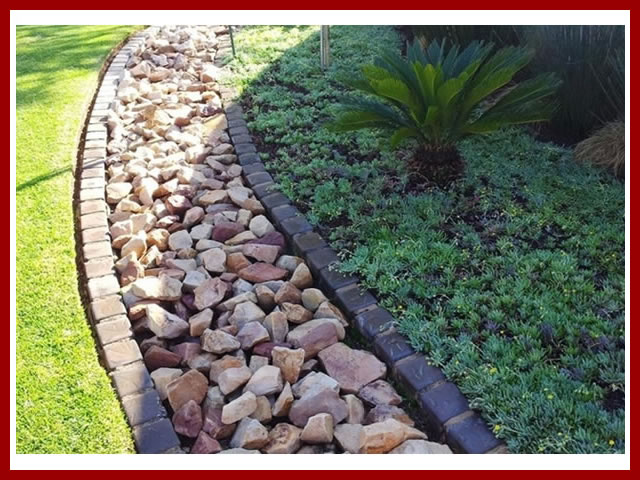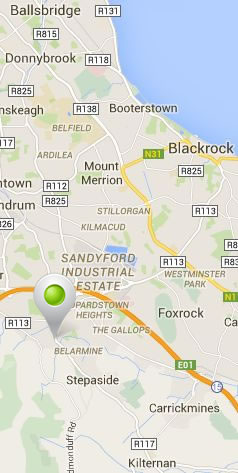Constructing a French Drain
The type of pipe you use for drainage is important. There are two schools of thought on this.
- The most common way is to use a flexible corrugated pipe, approx 4 inches in diameter, and which has small holes on its sides. It is of the utmost importance that you lay the pipe in a manner that keeps the holes to the sides. Don't lay it in a way such that the holes of the pipe are on the top and bottom - this has the potential to let in more dirt etc, and can cause problems down the line. Keep the holes to the side.
- The other way is to use 4 inch sewer / PVC pipe. You can drill small holes in the side yourself if your finding it difficult to find ones that have pre drilled holes.
The idea of using this 'stiff' PVC pipe over flexible corrugated piping is to do with cleaning. If you ever do get a blockage, a rigid PVC drain pipe can be cleaned out with a Roto-Rooter machine (think of the company 'dyno rod', the ones with those bright orange vans that you see on the road), where as corrugated piping can not.
In my experience, I have never found this to be a problem though. Once its laid correctly, you really should never get a blockage. Also, if your trench has to twist or bend around an area, using stiff PVC can be problematic. But either can be used though, it really depends on the job. So no need to fret!
Watch a CAD video on how to build a French Drain in your Garden
Digging your trench:
You should aim for a depth of approx 18 to 24 inches, with a width of 12 (think of the diameter of the pipe your using. If its 4 inches, having a trench with a width of 12 will allow you to have four inches either side of the pipe to be 'bedded in' using gravel).
The slope of the trench: Aim to have a slope of at least 1 inch. You can create one that is more, it just depends on the length of the trench, and how much digging / back filling you feel like doing!
How do you know what slope you have? If its 2+ inches it should be obvious with just a visual inspection. If its a 1 inch slope over a longer area, it may be more difficult to ascertain. A simple way to figure this out is to use twine (builders twine) and a line level.
Dig your trench and then run a piece of builders twine end to end. You can have someone help you with this (for holding one end), or you can do it yourself. The easiest way is to push two stakes (wood or steel etc) into the ground at either end. Leave say 4 inches of the steak protruding over ground. Tie the twine to one end. Then make a note of the height off the ground that you tie the twine at, lets say its 3 inches off the ground. Pull the line taut (at the other end of the trench), and pop your line level on the twine. Find the point that's level by moving the twine up or down at your end (the bubble on the level indicates this). Mark this point on the steak in the ground, you now have a starting point.
So you now know, that if the line at the end you started at was tied to the steak at say 3 inches above the ground, the point you just marked on your end represents the same. This then represents what the ground level is. Measure down one more inch. This then represents your one inch slope (measure down 2 inches for 2 etc). This may seem convoluted when written out like this, but once you are actually doing it, it will all make sense!
Now that you have the correct depths, width, and slope, its time to continue. If you want, you can now lay down a weed barrier membrane in the trench, making sure it runs up the sides and on to the top level. Then lay down a few inches of gravel in your trench (7+) on top of the menbrane. The size of the gravel should be approx 1+ inch. This will allow for better drainage. Then lay down your pipe, WITH THE HOLES AT THEIR SIDES! You can double check the slope of your pipe again. Pop a spirit level on the top of the pipe and you should have a fall to one end.
Fill in the sides around the pipe with more gravel. Also layer gravel on top. Fill in the remainder of the trench with soil / top soil. Rake it, and then put down grass seed. Done!

Another clever idea (above) is, instead of covering the trench with top soil, you can make a feature / pathway of it. In this case, you could line the sides of the trench with cobble or brick, and fill in the last or top layer using decorative pebbles (instead of using soil & grass). You now have a practical French drain, and a pretty garden path. Sweet!




